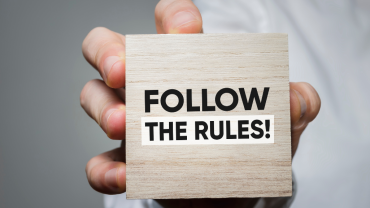Excelling in Wedding Address Etiquette: Your Comprehensive Guide
Planning a wedding involves many details, and one aspect that requires careful attention is wedding address etiquette. Excelling in this area can contribute to the overall elegance and sophistication of your special day. From organizing the guest list and timeline to choosing between handwritten and printed labels, addressing married couples with honorifics, and handling different situations, there are numerous considerations to keep in mind when addressing wedding invitations.
By following proper wedding address format and guidelines, you can ensure that your invitations are impeccably addressed and assembled, leaving a lasting impression on your guests.
Key Takeaways
- Start organizing your guest list and timeline about a month before sending out the invitations.
- Handwritten addresses are preferred on wedding invitations, while printed labels are considered inappropriate.
- Consider hiring a professional calligrapher for a formal touch.
- Address married couples using the appropriate honorific and include professional titles if applicable.
- Spell out all words in the address, including street and state names, for clarity.
These key takeaways provide a glimpse into the comprehensive guide on wedding address etiquette. By following the advice and guidelines outlined in this article, you can navigate the intricacies of addressing wedding invitations with confidence and finesse. Remember, attention to detail and thoughtful consideration of your guests’ names and titles will ensure that your invitations are expertly addressed, setting the tone for an unforgettable wedding experience.
Organizing the Guest List and Timeline
To ensure a smooth and successful wedding invitation process, it’s important to start organizing your guest list about a month before your desired send-out date. This will allow enough time to compile an accurate headcount and ensure that you have all the necessary information for addressing your invitations.
Begin by creating a comprehensive list of all your potential guests, including family members, friends, and colleagues. Consider any plus-ones or additional guests that may be invited for specific individuals. Sorting the list into categories such as family, friends, and work acquaintances can help with the addressing process later on.
Once you have your guest list finalized, it’s time to start thinking about the timeline for sending out your invitations. Traditionally, wedding invitations are sent out six to eight weeks before the wedding date. If you have guests traveling from out of town, it’s a good idea to send out save-the-date cards a few months in advance to give them ample time to make arrangements.
When it comes time to address your invitations, handwritten addresses are the preferred choice. This adds a personal touch and shows your guests that you took the time to address the invitation specifically to them. If your handwriting isn’t up to par, consider hiring a professional calligrapher to create elegant and legible addresses for your envelopes.
| Summary: | Start organizing your guest list a month before the send-out date. |
|---|---|
| Sort the list into categories to ease the addressing process. | |
| Send out save-the-date cards for out-of-town guests. | |
| Consider hiring a professional calligrapher for elegant addresses. |
Handwritten vs. Printed Labels: The Proper Approach
When it comes to addressing wedding invitations, the personal touch of handwritten addresses adds an extra level of elegance and respect. While printed labels may be convenient, they can give off a less formal and less thoughtful impression. For such a special occasion, it is worth taking the time and effort to handwrite the addresses on your invitations.
A handwritten address on an envelope sets the tone for the wedding celebration and shows your guests that you have gone above and beyond to make them feel special. It adds a personalized touch that cannot be replicated by a printed label. Each envelope becomes a work of art, showcasing your attention to detail and the effort you have put into every aspect of your wedding.
Handwritten addresses on wedding invitations not only add a personal and elegant touch, but they also show your guests that you truly care about their presence on your special day.
Depending on your wedding’s formality, you may want to consider hiring a professional calligrapher. They are skilled in creating beautiful and uniform handwriting, ensuring that each name and address is presented in an exquisite manner. A calligrapher can also guide you in choosing the appropriate ink color and writing style that complements your invitation design.
In summary, addressing wedding invitations with handwritten addresses is the proper and preferred approach. It adds a touch of elegance and respect, leaving a lasting impression on your guests. Whether you decide to tackle the task yourself or enlist the help of a professional calligrapher, the result will be a beautifully addressed invitation that sets the stage for a memorable wedding celebration.
Addressing Married Couples with Honorific
Addressing married couples on wedding invitations requires attention to detail and the use of appropriate honorifics and name formats. It is important to ensure that both spouses are acknowledged and their names are written correctly. When addressing a married couple, it is customary to list the husband’s name first followed by the wife’s name. The honorifics ‘Mr.’ and ‘Mrs.’ are commonly used for a traditional married couple.
If either spouse has a professional title, it is important to include it when addressing the envelope. For example, if the husband is a doctor, the envelope can be addressed to ‘Dr. John Smith and Mrs. Jane Smith.’ This shows respect for their professional accomplishments and adds a formal touch to the invitation.
When writing out the names on the envelope, it is essential to use the correct name formats. In formal situations, the full names of both spouses should be written out. For example, ‘John Davies Smith’ and ‘Jane Elizabeth Smith.’ However, if the couple prefers a more casual approach, it is acceptable to use first names only, such as ‘John and Jane Smith.’
| Husband’s Name | Wife’s Name | Example |
|---|---|---|
| John Smith | Jane Smith | Mr. John Smith and Mrs. Jane Smith |
| Dr. James Davis | Dr. Rachel Davis | Dr. James Davis and Dr. Rachel Davis |
Addressing married couples correctly on wedding invitations not only shows respect but also adds a touch of formality to the event. By paying attention to honorifics, name formats, and personal preferences, you can ensure that your invitations are expertly addressed and reflect the importance of the occasion.
Spelling Out Words in the Address
To ensure accuracy and clarity, it’s important to spell out all words in the address on wedding invitations, from street names to state names. This attention to detail ensures that there are no misunderstandings or misinterpretations. When guests receive the invitation, they should have a clear understanding of the location and be able to find their way without any confusion.
Spelling out words in the address also adds a touch of elegance and formality to the invitation. It shows that the couple has taken the time to consider every aspect of their wedding, including the presentation of the invitation. This small gesture can make a big impact on the overall impression that guests have of the event.
For example, instead of writing “123 Main St.” on the invitation, it is recommended to write “One Two Three Main Street.” Similarly, instead of using abbreviations for state names like “CA,” it is better to spell out the full state name, such as “California.” By spelling out each word, the address becomes more visually appealing and gives a sense of sophistication.
| Abbreviation | Spelled-Out Version |
|---|---|
| St. | Street |
| Ave. | Avenue |
| Rd. | Road |
| Dr. | Drive |
| Blvd. | Boulevard |
Remember to double-check the spellings of street names and state names to ensure accuracy. By following this simple yet important rule of spelling out words in the address, you can create a beautiful and well-presented wedding invitation that leaves a lasting impression on your guests.
Assembling Invitations with Care
Assembling wedding invitations requires careful attention to detail to ensure a polished and professional presentation. Each component of the invitation suite should be arranged in a specific order to create a cohesive and elegant look. Here are some important considerations to keep in mind:
- Start by placing the main invitation card at the bottom of the stack, followed by any additional enclosure cards such as response cards, reception cards, or accommodation cards. This order allows the recipient to see the main event details first and then access the additional information as needed.
- If you’re including multiple enclosure cards, arrange them in size order, from largest to smallest. This creates a visually pleasing and organized appearance when the envelope is opened.
- After arranging the cards, place them neatly inside the inner envelope, with the printed side facing the back flap of the envelope. This ensures that the recipient sees the printed side first when opening the inner envelope.
- If you’re using an outer envelope, the inner envelope should be placed inside it with the front facing forward. This allows the outer envelope to be addressed and provides an additional layer of protection for the invitation suite.
Remember, the goal is to create an inviting and beautiful presentation that reflects the importance of the occasion. Taking the time to assemble the invitations with care will leave a lasting impression on your guests. Read more about place card etiquette.
| Components | Order |
|---|---|
| Main invitation card | Bottom of the stack |
| Additional enclosure cards | Follow main invitation card |
“Assembling a wedding invitation is like creating a work of art. Every detail matters, from the order in which the components are arranged to the way they are delicately placed inside the envelopes. It’s a labor of love that showcases the care and attention you’ve put into planning your special day.”
Expert Tip: Wax Seals
If you want to add a touch of elegance and tradition to your wedding invitations, consider using wax seals. These decorative seals can be placed on the outer envelope flap, creating a beautiful and personalized finishing touch. Choose a design or monogram that represents you and your partner, and use a wax stamp to create a seal that is both visually stunning and meaningful.
By following these guidelines and paying close attention to detail, you can ensure that your wedding invitations are assembled with care, creating a memorable first impression for your guests.
Postage Considerations
Properly addressing postage is an essential part of wedding invitation etiquette to ensure timely delivery and prevent any mishaps. When it comes to postage, it is recommended to have the invitations and reply cards weighed to determine the correct amount. This will avoid any delays or returned mail due to insufficient postage. Additionally, it is advisable to hand-cancel the envelopes at the post office to prevent damage caused by machine processing.
It is important to note that the size, weight, and thickness of the invitations, as well as any enclosures, will affect the postage cost. To avoid any surprises, you can consult with your local post office or use a postage calculator to determine the exact amount required.
Another consideration when addressing postage is the inclusion of a response card with a pre-stamped envelope for guests to send their RSVPs. To ensure a seamless process, it is recommended to weigh both the invitation and response card together to calculate the correct postage. This will ensure that guests do not need to add additional stamps when responding.
Table 1: Postage Rates (as of 2021)
| Weight (oz) | Postage Rate |
|---|---|
| 1 | $0.55 |
| 2 | $0.75 |
| 3 | $0.95 |
| 3.5 | $1.20 |
Remember, taking the time to address postage properly will ensure that your wedding invitations are delivered promptly and without any unnecessary complications. By following these guidelines, you can guarantee that your guests receive the invitations in pristine condition, setting the tone for a memorable event.
Addressing Different Situations
When it comes to addressing invitations for different situations, understanding proper honorifics and titles is crucial for showing respect and inclusivity. For same-sex married couples, it is appropriate to address them using both partners’ names without indicating any gender. For example, “Mr. Chris Johnson and Mr. Alex Smith” or “Ms. Emily Jones and Ms. Sarah Brown.” This ensures that both partners are acknowledged and their names are presented in a respectful manner.
Unmarried couples living together can be addressed using their individual names on separate lines, with the person you are closer to listed first. For example, “Ms. Amanda Thompson” on one line and “Mr. John Reynolds” on the line below. If one partner has a professional title, like Dr. or Judge, it is important to include it as well.
When it comes to addressing single guests, it is important to determine whether they are invited with or without a plus-one. If they are allowed to bring a date, the inner envelope should state “and Guest.” For example, “Ms. Emily Lee and Guest.” It is advisable to use the guest’s full name on the outer envelope for clarity. If no plus-one is included, it is appropriate to address the inner envelope to the single guest’s name only, without the mention of “and Guest.”
| Situation | Addressing Example |
|---|---|
| Same-Sex Married Couple | Mr. Chris Johnson and Mr. Alex Smith |
| Unmarried Couple Living Together | Ms. Amanda Thompson Mr. John Reynolds |
| Single Guest with Plus-One | Ms. Emily Lee and Guest |
| Single Guest without Plus-One | Ms. Emily Lee |
By following these guidelines, you can effectively address wedding invitations for various situations, ensuring that each guest feels respected and included. Thoughtful consideration of honorifics, titles, and proper name formats will contribute to a warm and welcoming atmosphere for all attendees.
Addressing Professionals and Officials
When inviting professionals and officials to your wedding, it’s essential to show proper respect and acknowledge their titles on the invitation. This demonstrates your understanding of wedding address etiquette and sets the tone for a formal and elegant event.
Table:
| Profession/Title | Proper Addressing |
|---|---|
| Doctor (Medical) | Dr. [Full Name] |
| Doctor (PhD) | Dr. [Full Name] |
| Judge | The Honorable [Full Name] |
| Elected Official | The Honorable [Full Name] |
Using these proper honorifics and titles not only shows respect but also adds a touch of formality to your wedding invitations. It’s important to research the correct titles for the professionals or officials you wish to invite and address them accordingly.
Quote:
“Addressing professionals and officials correctly on wedding invitations is a sign of thoughtful consideration and proper etiquette. By acknowledging their titles, you not only show respect but also create a distinguished atmosphere for your special day.” – Wedding Address Etiquette Expert
Remember, attention to detail is key throughout the entire addressing process. Take the time to double-check that you have spelled names correctly and used the appropriate honorifics and titles. By doing so, you’ll ensure that your wedding invitations are not only expertly addressed but also reflect the high level of care and consideration you’ve put into every aspect of your special day.
Addressing Families: Outer and Inner Envelopes
When addressing families on wedding invitations, proper etiquette involves utilizing both outer and inner envelopes to convey respect and clarity. The outer envelope is used to address the entire family, while the inner envelope is used to specify the names of the individuals invited.
On the outer envelope, it is customary to include the parents’ names, followed by the family name. For example:
| Outer Envelope |
|---|
| Mr. and Mrs. John Smith |
| 123 Main Street |
| Anytown, USA |
The inner envelope provides an opportunity to be more specific and personal. It should include the names of each individual invited, using their proper titles and last names. For example:
| Inner Envelope |
|---|
| Mr. and Mrs. Smith |
| John and Emily |
| Sarah and Michael |
Addressing families with outer and inner envelopes ensures that each individual feels acknowledged and included. It also allows for clarity in terms of who is invited, helping to avoid any confusion or misunderstandings. By following these guidelines, you can demonstrate your attention to detail and create a truly memorable experience for your guests.
Formal vs. Modern Approaches to Addressing
While formal addressing is a traditional choice for wedding invitations, some couples may prefer a more modern and casual approach. Both options have their merits and can help set the tone for the event. Let’s explore the differences and considerations for each style.
In formal addressing, it is customary to use honorifics, titles, and full names. For example, “Mr. and Mrs. John Smith.” This approach conveys a sense of elegance and sophistication. It is particularly suitable for formal weddings or events with a traditional theme. Formal addresses are usually written in calligraphy or a script font to further enhance the aesthetic appeal.
On the other hand, a modern approach allows for a more relaxed and personal touch. Couples may choose to address their invitations using first names only, such as “John and Jane,” or even opt for a casual nickname if it aligns with their style. This approach is often seen in less formal weddings or events with a contemporary or unconventional theme.
When deciding which approach to take, consider the overall vibe of your wedding and the impression you want to make on your guests. While formal addressing can create a sense of tradition and formality, a modern approach can showcase your personality and make your invitations feel more intimate.
| Formal Addressing | Modern Addressing |
|---|---|
| Uses honorifics, titles, and full names | Often uses first names only or casual nicknames |
| Conveys elegance and sophistication | Creates a more relaxed and personal feel |
| Common for formal weddings or traditional themes | Suitable for less formal weddings or contemporary themes |
The choice between formal and modern addressing is ultimately a personal one. Discuss your preferences as a couple and consider the overall style and ambiance of your wedding. Whether you embrace tradition or opt for a more casual approach, what matters most is that your invitations reflect your unique love story and set the right tone for your special day.
Conclusion
Mastering wedding address etiquette is crucial for creating a memorable and elegant wedding experience that starts with expertly addressed and assembled invitations. It requires careful attention to detail and an understanding of formalities. When organizing the guest list, it is recommended to start about a month before the desired send-out date, allowing enough time for a reliable headcount before the event.
Handwritten addresses are preferred on wedding invitations, as they add a personal touch. Printed labels, on the other hand, are considered inappropriate. Depending on the level of formality, it may be necessary to hire a professional calligrapher to inscribe the envelopes and ensure a polished look.
Addressing married couples correctly is important. The appropriate honorifics and correct name format should be used. If either spouse has a professional title, it should be included. It is essential to spell out all words in the address, including street names and state names, to ensure clarity and attention to detail.
When assembling invitations, it is crucial to follow the proper order for enclosures and stack them in size order. Paying attention to every detail during the assembly process will result in a polished and professional presentation. When it comes to postage, it is advisable to have the invitations and reply cards weighed to ensure correct postage. Hand-canceling at the post office is recommended to prevent damage to the envelopes.
Addressing different situations, such as same-sex married couples, unmarried couples living together, and single guests with or without a plus-one, requires thoughtful consideration. Using proper honorifics and titles is important, as it shows respect and attention to detail. Families should be addressed on both the outer and inner envelopes, with children’s names included on the inner envelope.
While traditionally wedding invitations are addressed formally, it ultimately comes down to the couple’s preference. Some may opt for a more modern approach. The key is to ensure that all guests’ names and titles are addressed with care, creating a personalized and meaningful touch to the wedding invitation.
By following these guidelines and mastering wedding address etiquette, you can create a truly memorable wedding experience from the very beginning. Expertly addressed and assembled invitations set the tone for the special day and show guests that their presence is valued. Paying attention to the smallest details will make a big difference in creating an elegant and unforgettable celebration of love.
FAQ
When should I start organizing the guest list and sending out invitations?
It is recommended to start organizing the guest list about a month before the desired send-out date. This allows enough time for a reliable headcount before the event.
Should I use handwritten addresses or printed labels on wedding invitations?
Handwritten addresses are preferred on wedding invitations, while printed labels are considered inappropriate.
Can I hire a professional calligrapher to address the envelopes?
Depending on the level of formality, it may be necessary to hire a professional calligrapher to inscribe the envelopes.
How should I address married couples on wedding invitations?
It is important to address married couples with the appropriate honorific and write out their names in the correct manner. If either spouse has a professional title, it should be included.
Should I spell out all words in the address?
Yes, all words in the address, including street names and state names, should be spelled out for clarity.
How should I assemble the wedding invitations?
It is important to assemble the invitations with care, using the appropriate order for enclosures and stacking them in size order.
How should I handle postage for the invitations and reply cards?
It is advisable to have the invitations and reply cards weighed to ensure correct postage. Hand-canceling at the post office is recommended to prevent damage to the envelopes.
How should I address different situations, such as same-sex married couples, unmarried couples living together, and single guests?
There are various ways to address different situations, such as using proper honorifics and titles. It is important to consider the preferences of the individuals involved.
How should I address professionals, such as doctors, judges, or elected officials?
When addressing professionals and officials, it is important to use proper honorifics and titles. Pay attention to their specific credentials and include them if applicable.
How should I address families on wedding invitations?
It is best to address both the outer and inner envelopes for families. Additionally, children’s names should be included on the inner envelope.
Should I address wedding invitations formally or can I take a more modern approach?
It is generally recommended to address envelopes formally, unless the couple prefers a more modern approach. Consider the desired tone of the wedding and the couple’s preferences.







